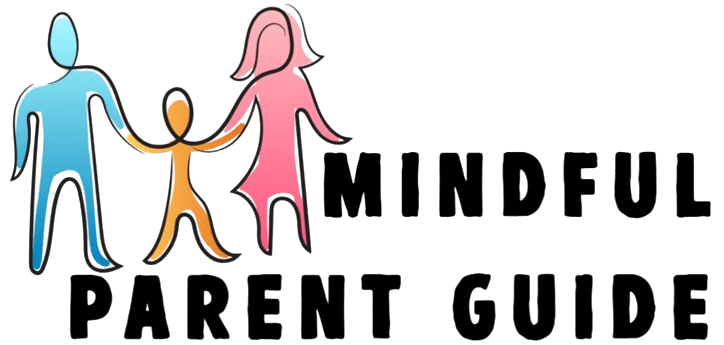What is the Importance of Active Listening?
Active listening transcends the mere act of hearing words; it s an essential skill that has the potential to transform both your personal and professional relationships.
This article delves into the significance of active listening, illustrating how it cultivates strong connections, elevates communication, and nurtures empathy. It also offers practical strategies for honing this indispensable skill while pinpointing common barriers that obstruct effective listening.
By embracing and mastering active listening, you can minimize misunderstandings and conflicts, ultimately fostering healthier interactions. Dive in now and discover the transformative power of active listening in your life!
Contents
Key Takeaways:
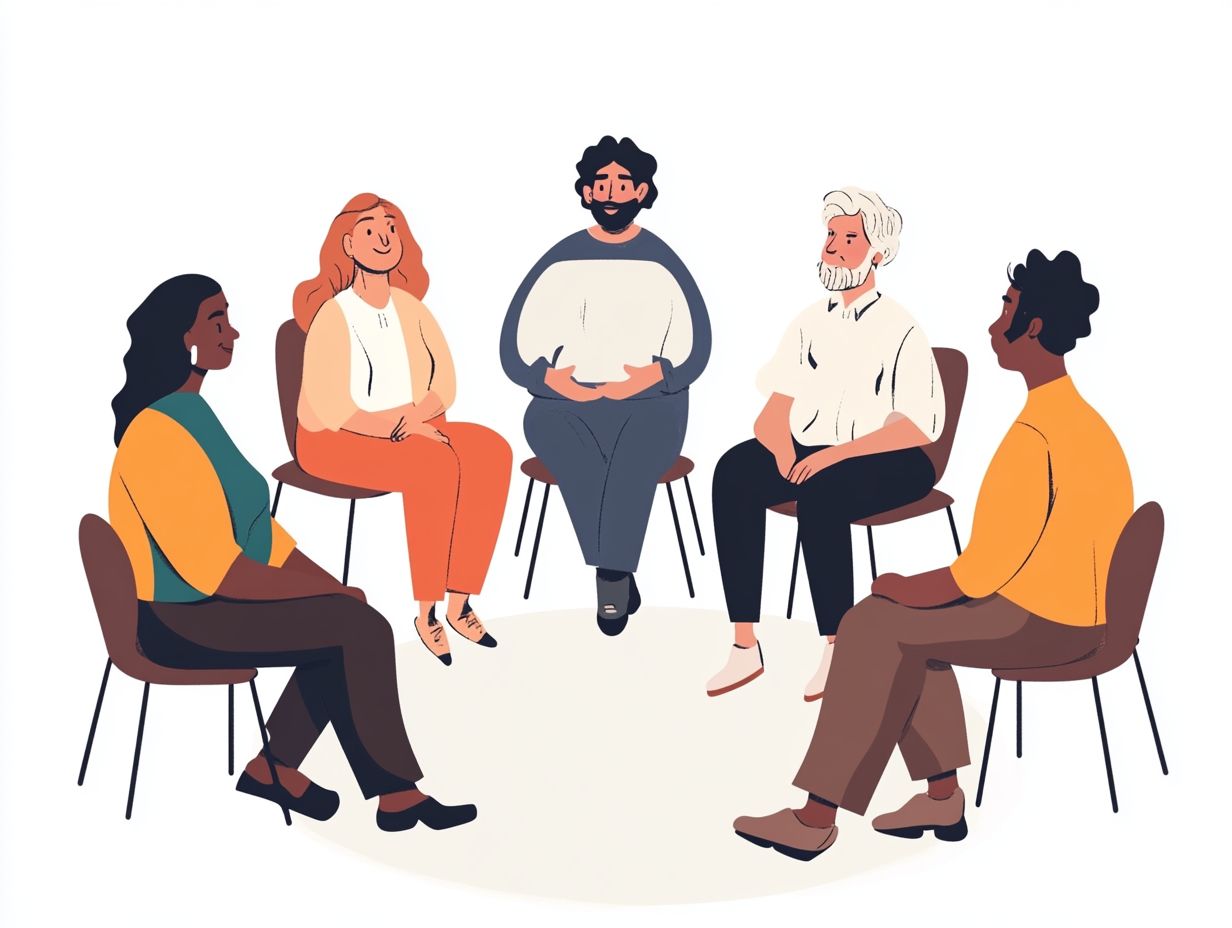
- Active listening strengthens relationships and improves communication skills.
- Paying attention and using verbal and nonverbal cues are key to practicing active listening.
- Distractions, biases, and lack of empathy can be barriers to actively listening.
Why is Active Listening Important?
Active listening is absolutely vital in many contexts, especially in workplace communication, as it cultivates an atmosphere where robust relationships can flourish.
By refining your listening skills, you become more proficient at resolving conflicts, sidestepping misunderstandings, and fostering trust among your team members.
Effective leaders understand the critical role of active listening in pinpointing issues and establishing a positive workplace culture that not only enables their leadership but also encourages the development of others.
Active listening enriches team dynamics and enhances communication techniques, ultimately paving the way for improved self-awareness and feedback strategies that are essential for success.
1. Builds Strong Relationships
Active listening is an essential skill that plays a crucial role in cultivating strong relationships, especially in the workplace, where trust and effective communication are key elements.
By genuinely engaging with others and allowing them the space to share their thoughts, you create an environment where colleagues feel valued and understood. For instance, during a team meeting when a member is feeling overwhelmed by their tasks, a coworker who practices active listening might ask clarifying questions and reflect back the speaker’s concerns, ensuring they feel heard. This approach fosters an atmosphere of support and empathy.
As a result, when team members feel connected, they are more inclined to collaborate effectively, share innovative ideas, and tackle challenges with a united front. Ultimately, this enhances productivity and boosts morale throughout the organization.
2. Improves Communication Skills
Enhancing your listening skills through active listening can significantly elevate workplace communication, helping you as an effective leader to convey messages with clarity through both verbal gestures and non-verbal cues.
By cultivating a culture that prioritizes audience engagement, you ensure that your messages are not merely delivered but truly understood. Active listening requires you to fully concentrate on and comprehend what is being communicated. You must also thoughtfully respond to it.
Techniques like paraphrasing key points, asking clarifying questions, and using appropriate body language such as nodding or maintaining eye contact are essential in this endeavor.
For example, when a team member shares a project update, you might summarize the main points and inquire about potential challenges. This not only demonstrates your attentiveness but also fosters an open dialogue. Such practices significantly diminish the chances of miscommunication, paving the way for stronger collaboration and a more harmonious workplace environment.
In summary, active listening is vital for your personal and professional growth. Make it a daily practice to refine this skill, and you’ll see positive changes in your interactions.
3. Increases Understanding and Empathy
Active listening enhances your understanding and empathy within your team, creating an environment where team dynamics flourish through mutual respect and self-awareness.
When you and your colleagues practice active listening, your conversations go beyond just the surface level, exploring the feelings and reasons behind the words. This approach not only ensures that everyone feels heard and valued, but also fosters greater emotional intelligence, defined as the ability to understand and manage your own emotions and those of others, throughout the group.
For example, during a team meeting, when a team member shares project challenges, attentive colleagues can reflect back what they ve heard. This cultivates a shared understanding that paves the way for collaborative problem-solving. When someone voices their frustration, active listeners can pose open-ended questions, unearthing underlying concerns and facilitating a supportive dialogue.
Ultimately, these interactions transform your workplace into a sanctuary of empathy, allowing you to appreciate diverse perspectives and work together more cohesively.
4. Reduces Conflict and Misunderstandings
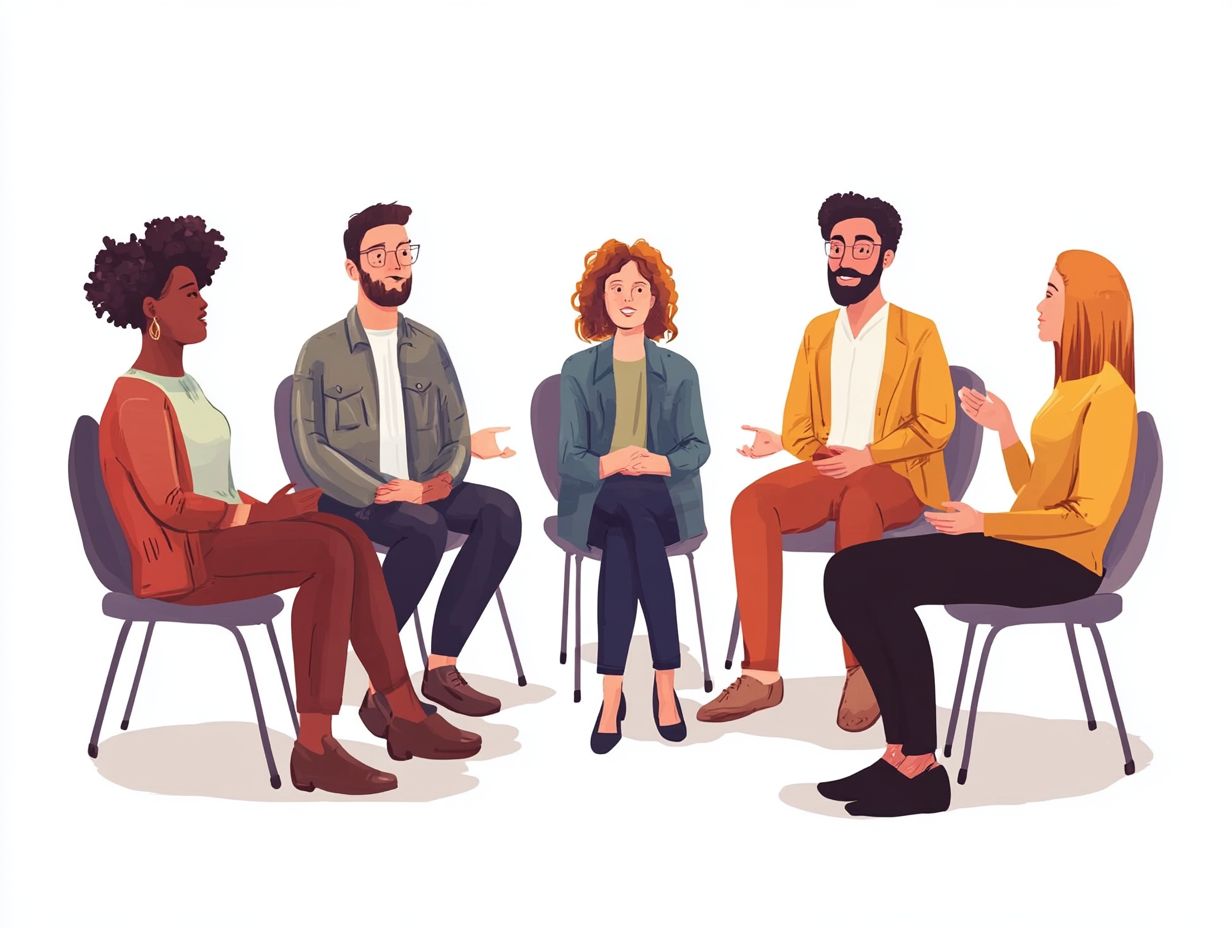
By honing your active listening skills, you can effectively minimize conflict and misunderstandings, allowing for swift issue resolution and the implementation of constructive feedback techniques.
This vital skill not only cultivates a harmonious work environment but also promotes open and honest communication. When team members feel truly heard, they are more inclined to express their thoughts and concerns openly, which in turn reduces tension.
Try these methods to enhance your active listening skills:
- Summarizing key points during discussions
- Maintaining eye contact
- Asking clarifying questions
These techniques will help ensure that everyone s voice is acknowledged and valued, fostering a collaborative atmosphere where conflicts are diminished and solutions are easily achieved.
Techniques for Practicing Active Listening
Practicing active listening is crucial for cultivating effective communication in the workplace. There are several key techniques you can adopt to engage in mindful listening, enhancing your interactions and fostering a more collaborative environment.
1. Pay Attention and Be Present
To practice active listening effectively, you need to be fully present and engaged, embracing mindful listening that prioritizes the speaker’s message over any distractions.
Being fully present transforms your conversations! This practice is vital for developing a deeper understanding of the conversation, as it enables you to absorb and reflect on the nuances of what is being communicated. When you genuinely focus on a speaker’s words, you not only enhance your own comprehension but also create a supportive atmosphere that encourages open dialogue.
To eliminate distractions, start by setting aside your electronic devices and choosing a quiet environment. Ensure your body language conveys engagement through eye contact and nodding. Furthermore, cultivating self-awareness helps by using mindfulness techniques. This allows you to stay attuned to your thoughts and emotions during conversations, fostering healthier relationships in the workplace.
2. Use Verbal and Nonverbal Cues
Utilizing verbal gestures and non-verbal cues is essential to mastering active listening, as these communication techniques pave the way for a responsive and engaging dialogue. By weaving these elements into your interactions, you can significantly elevate the quality of your conversations.
For example, maintaining eye contact signals genuine interest, demonstrating that you are fully engaged in the discussion. A simple nod here and there can serve as positive reinforcement for the speaker, letting them know that their message resonates with you. Adding phrases like “I see” or “That’s interesting” enriches the verbal exchange and encourages more profound discussions.
On the flip side, crossing your arms or glancing at your watch can inadvertently convey disinterest, which can stifle effective feedback. These non-verbal cues not only create a more attentive atmosphere but also foster a deeper understanding between everyone involved.
Start applying these techniques today and witness the positive changes in your workplace!
3. Ask Clarifying Questions
Asking clarifying questions is essential for mastering the art of active listening. It encourages you to dive deeper into discussions and helps you, as an effective leader, pinpoint problems with precision. This technique not only promotes a comprehensive understanding of the subject matter but also inspires open dialogue among your team members.
For instance, when a colleague shares a complex idea, you might consider asking, “Can you elaborate on how this will affect our current project timeline?” or “What challenges do you foresee in implementing this strategy?” Such inquiries can lead to enriching conversations. By promoting clarity, you ensure everyone is aligned, ultimately enhancing communication in the workplace.
This practice is invaluable for problem-solving as it helps uncover hidden concerns and encourages collaborative solutions. It reinforces the importance of shared understanding in achieving your team objectives, paving the way for success.
4. Summarize and Reflect
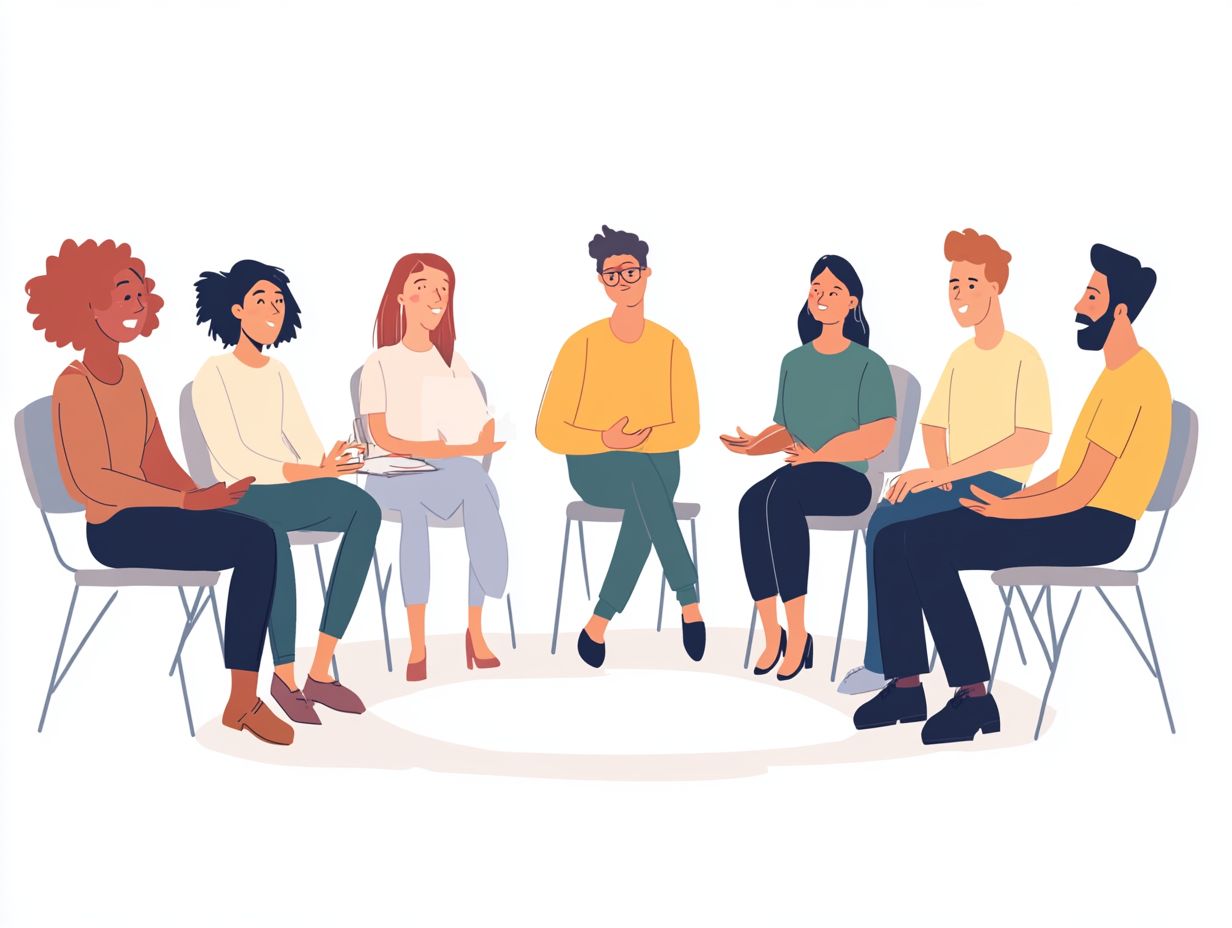
Summarizing and reflecting on conversations is a powerful way to practice active listening. It strengthens your understanding and enhances your feedback techniques.
When you summarize, you capture the essential points of discussions, which allows for a clearer comprehension of the material presented. Reflection complements this by prompting deeper thinking, enabling you to connect new insights with your prior knowledge and experiences. This practice is crucial for workplace communication and listening skills.
Employing techniques such as taking notes right after a meeting or using reflective journals can significantly bolster these practices. Encouraging your team members to share their summaries fosters a culture of constructive feedback, inviting diverse perspectives and collaborative learning. Effective leaders use these techniques to build trust and resolve conflict within their teams.
This approach truly strengthens your grasp of the topic and cultivates an environment where everyone feels valued and heard. It ultimately drives collective growth and improves team dynamics in the workplace.
What Are the Barriers to Active Listening?
Identifying barriers to active listening is crucial for overcoming challenges in workplace communication. Common obstacles you may encounter include:
- distractions
- preconceived notions
- emotional triggers
- a lack of empathy
By recognizing these hindrances, you can enhance your communication skills and foster a more productive work environment.
1. Distractions
Distractions in the workplace can impede your ability to engage in active listening. This makes it increasingly difficult to maintain focus and self-awareness during conversations. Reducing these distractions can help prevent misunderstandings and identify problems early on.
The relentless ping of notifications from emails and instant messaging, along with the ongoing murmur of conversations and background noise of office machinery, creates an environment that is conducive to distraction. These interruptions not only divert your attention but can also lead to misunderstandings and a lack of clarity in communication.
To strengthen your active listening skills despite these distractions, consider implementing strategies such as:
- Establish clear boundaries for when to check your devices.
- Utilize noise-cancelling headphones to reduce auditory disturbances.
- Set up quiet spaces for key discussions.
By fostering a culture of respect around conversation times and minimizing multitasking, you can greatly enhance overall attentiveness and retention during your exchanges.
Now that you know the barriers, take action! Start identifying these distractions today to become a more effective listener.
2. Preconceived Notions and Biases
Preconceived notions and biases can significantly hinder your ability to engage in active listening. This often results in misunderstandings and a lack of genuine understanding and empathy. These biases can affect team dynamics and workplace environment.
When you approach conversations with these mental filters, it’s easy to get caught up in your own assumptions. Instead of truly hearing what the other person is trying to communicate, you may build barriers that obstruct effective communication.
To cultivate a more open dialogue, you must recognize these biases. Make a conscious effort to set them aside. Techniques such as paraphrasing what the speaker has expressed, asking open-ended questions, and practicing mindful listening being present and fully engaged can enhance your ability to engage in meaningful conversations.
By nurturing awareness and embracing curiosity, you can turn interactions into valuable opportunities for deeper understanding.
3. Emotional Triggers
Emotional triggers can create significant barriers to your ability to listen actively. They profoundly affect your engagement and workplace relationships. Recognizing these triggers is vital for effective leaders and sales professionals.
When emotions run high, they can cloud your judgment and distort the message being conveyed. This often leads to misunderstandings and conflicts. You may find yourself focusing more on your feelings than on the speaker’s words.
Recognizing when emotions are triggered is essential for honing your communication skills. Taking a moment to pause, breathe, and reflect on your feelings before responding can make a world of difference.
Utilizing techniques like paraphrasing the speaker s points promotes clarity and shows that you are actively engaged. This fosters a more productive dialogue. Ultimately, it strengthens your interpersonal connections, strong relationships, and enhances decision-making.
4. Lack of Empathy
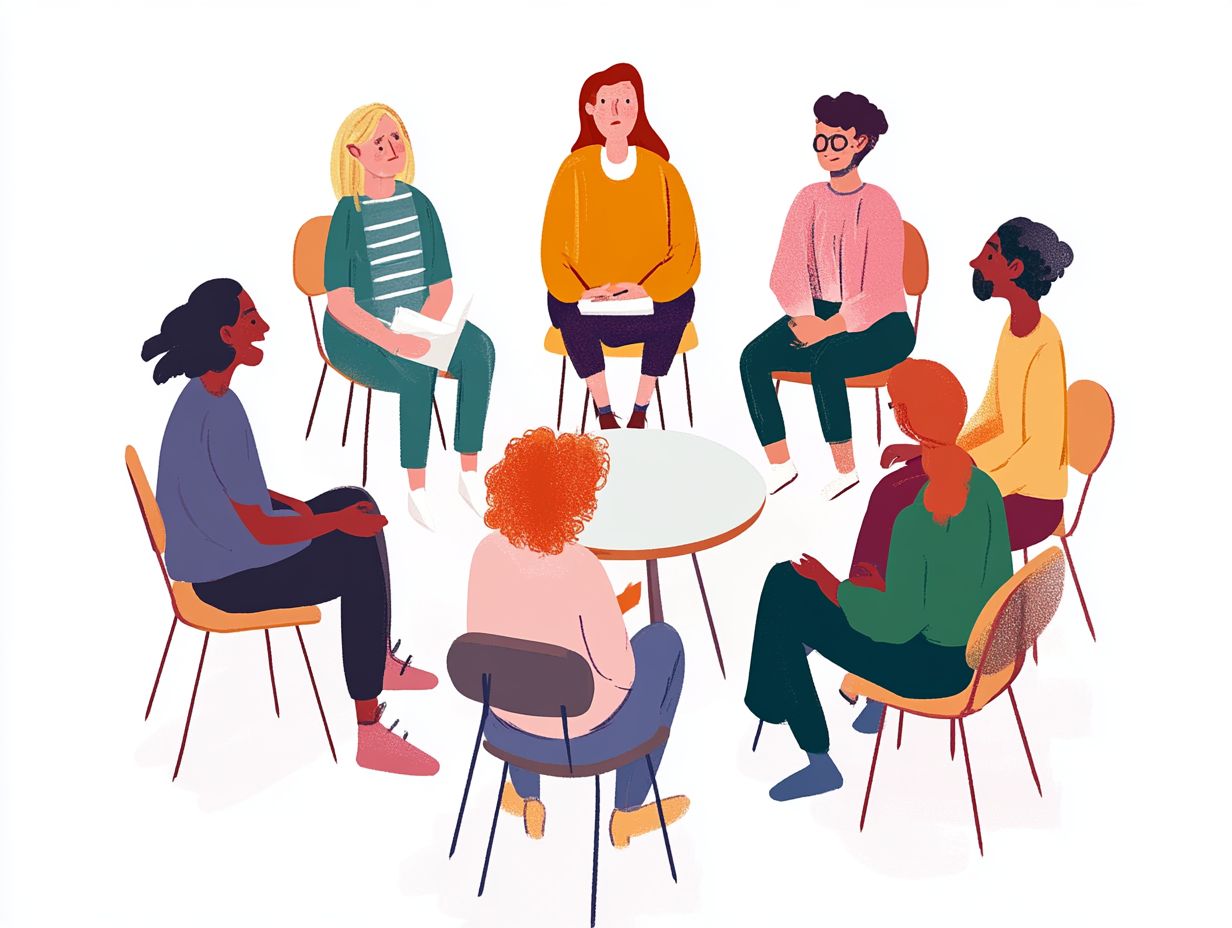
A lack of empathy can significantly hinder your ability to practice active listening. This leads to strained relationships and persistent misunderstandings. This is particularly critical in fields such as healthcare, sales, and leadership.
When you fail to connect emotionally with the speaker, grasping their perspective or feelings becomes increasingly difficult. This disconnect not only obstructs clear communication but also heightens the risk of conflict, as misinterpretations are bound to arise.
Effective communication techniques are crucial in preventing such issues. To cultivate empathy, consider embracing mindfulness. Dive into the emotions that underlie the words being spoken. By doing this, you can refine your listening skills, paving the way for more constructive interactions.
This approach is essential for training others and coaching within your team. Ultimately, nurturing empathy enriches your personal connections. It fosters a more supportive, collaborative environment for everyone involved.
This is a key aspect of trust-building and maintaining strong relationships in both personal and workplace settings.
Frequently Asked Questions
What is the Importance of Active Listening?
Active listening is the process of fully concentrating on and understanding the message being communicated by another person. It involves not only hearing the words being said, but also paying attention to nonverbal cues and providing feedback to show understanding. This skill empowers leadership and enhances workplace communication.
How does active listening improve relationships?
Active listening can improve relationships by fostering trust, respect, and understanding between individuals. It shows that you are genuinely interested in what the other person has to say and value their thoughts and feelings. This is particularly important in client relationships and workplace communication.
What are the benefits of being an active listener?
Being an active listener can lead to better communication, problem-solving, and conflict resolution. It can also increase productivity and efficiency, as well as improve personal and professional relationships. Effective feedback techniques are a critical part of this process.
What are some barriers to effective active listening?
Common barriers to active listening include distractions, biases, lack of empathy, and poor communication skills. These obstacles prevent individuals from fully understanding the communicated message.
How can one become a better active listener?
To become a better active listener, practice mindfulness and give your full attention to the speaker. Asking open-ended questions and summarizing what the speaker has said also helps enhance this skill.
Being aware of personal barriers to active listening is important. Embracing spoken cues and non-verbal cues, like body language and facial expressions, can significantly improve your listening skills.
Is active listening important in a professional setting?
Active listening is crucial in a professional setting. It fosters better teamwork, boosts productivity, and improves customer satisfaction.
Active listening shows respect for colleagues and clients. It helps avoid misunderstandings and conflicts, making it essential for effective leadership and team success.
